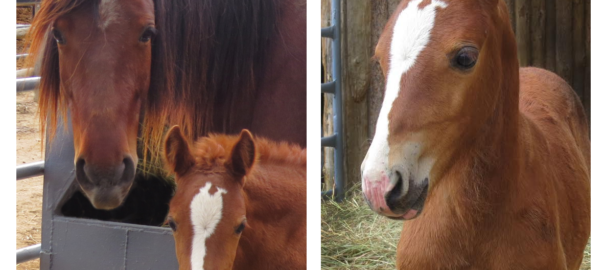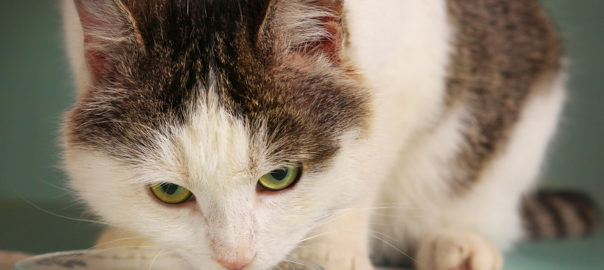What would you do if you were asked to help save the lives of over 900 starving horses, many blind, and all the mares pregnant?
If you’re Elaine Nash, you mobilize your nonprofit horse rescue, Fleet of Angels, along with fellow rescue group Return to Freedom, and get to work. That’s just what happened when a horse and burro sanctuary in South Dakota closed down, leaving hundreds of horses starving in desperate conditions.
The two groups managed to get all the horses moved to homes and other rescues around the country, but still have huge feed, transport, veterinary, and land leasing bills to pay — and around 165 remaining horses who need homes, including babies like little one-month-old Allie and her mama, shown in the photo above.
It was the largest horse rescue in U.S. history, and these beautiful horses are American Mustangs, literally national treasures. The groups working to save them need all the help they can get, so please donate if you can, volunteer if you’re near Fort Collins, Colo., and consider adopting wherever you are — you can see all the available horses on the ISPMB Adoptable Horses Facebook group, where they’re known as the Hallelujah Horses!
There are young, healthy horses, pregnant mares, babies, stallions, geldings, seniors, and blind horses. They need you, and I’m pretty sure you need them, too! And there’s a $100 gelding subsidy for the stallions provided by the National Equine Rescue Network.
Fill out the adoption application here.
Can’t adopt? Please donate at www.ISPMBHorseRescueMission.org, and ask your friends and family to donate, too.
Still have questions? Email niffyg@yahoo.com.
Please share — these groups have already spent nearly half a million dollars, and need to wrap up this rescue in the shortest time possible!




